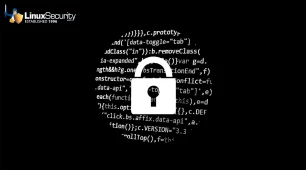SuSE: 2009-053: IBM Java 6 Security Update
Summary
-----BEGIN PGP SIGNED MESSAGE-----
Hash: SHA1
______________________________________________________________________________
SUSE Security Announcement
Package: java-1_6_0-ibm
Announcement ID: SUSE-SA:2009:053
Date: Wed, 04 Nov 2009 15:00:00 +0000
Affected Products: SLE 11
SLES 11
Vulnerability Type: remote code execution
Severity (1-10): 8
SUSE Default Package: yes
Cross-References: CVE-2009-0217, CVE-2009-2493, CVE-2009-2625
CVE-2009-2670, CVE-2009-2671, CVE-2009-2672
CVE-2009-2673, CVE-2009-2674, CVE-2009-2675
CVE-2009-2676
Content of This Advisory:
1) Security Vulnerability Resolved:
IBM Java 6 security update
Problem Description
2) Solution or Work-Around
3) Special Instructions and Notes
4) Package Location and Checksums
5) Pending Vulnerabilities, Solutions, and Work-Arounds:
See SUSE Security Summary Report.
6) Authenticity Verification and Additional Information
______________________________________________________________________________
1) Problem Description and Brief Discussion
The IBM Java 6 JRE/SDK was updated to Service Release 6, fixing
various bugs and security issues.
Following security issues were fixed:
CVE-2009-2676: A security vulnerability in the JNLPAppletLauncher
might impact users of the Sun JDK and JRE. Non-current versions of
the JNLPAppletLauncher might be re-purposed with an untrusted Java
applet to write arbitrary files on the system of the user downloading
and running the untrusted applet.
The JNLPAppletLauncher is a general purpose JNLP-based applet launcher
class for deploying applets that use extension libraries containing
native code.
CVE-2009-2493: The Java Runtime Environment includes the Java Web
Start technology that uses the Java Web Start ActiveX control to
launch Java Web Start in Internet Explorer. A security vulnerability
in the Active Template Library (ATL) in various releases of Microsoft
Visual Studio, which is used by the Java Web Start ActiveX control,
might allow the Java Web Start ActiveX control to be leveraged to
run arbitrary code. This might occur as the result of a user of the
Java Runtime Environment viewing a specially crafted web page that
exploits this vulnerability.
CVE-2009-2670: A vulnerability in the Java Runtime Environment audio
system might allow an untrusted applet or Java Web Start application
to access system properties.
CVE-2009-0217: A vulnerability with verifying HMAC-based XML digital
signatures in the XML Digital Signature implementation included with
the Java Runtime Environment (JRE) might allow authentication to be
bypassed. Applications that validate HMAC-based XML digital signatures
might be vulnerable to this type of attack.
Note: This vulnerability cannot be exploited by an untrusted applet
or Java Web Start application.
CVE-2009-2671
CVE-2009-2672: A vulnerability in the Java Runtime Environment with
the SOCKS proxy implementation might allow an untrusted applet or
Java Web Start application to determine the user name of the user
running the applet or application.
A second vulnerability in the Java Runtime Environment with the
proxy mechanism implementation might allow an untrusted applet or
Java Web Start application to obtain browser cookies and leverage
those cookies to hijack sessions.
CVE-2009-2673: A vulnerability in the Java Runtime Environment with
the proxy mechanism implementation might allow an untrusted applet
or Java Web Start application to make non-authorized socket or URL
connections to hosts other than the origin host.
CVE-2009-2674: An integer overflow vulnerability in the Java Runtime
Environment with processing JPEG images might allow an untrusted
Java Web Start application to escalate privileges. For example,
an untrusted application might grant itself permissions to read and
write local files or run local applications that are accessible to
the user running the untrusted applet.
CVE-2009-2675: An integer overflow vulnerability in the Java Runtime
Environment with unpacking applets and Java Web Start applications
using the unpack200 JAR unpacking utility might allow an untrusted
applet or application to escalate privileges. For example, an untrusted
applet might grant itself permissions to read and write local files
or run local applications that are accessible to the user running
the untrusted applet.
CVE-2009-2625: A vulnerability in the Java Runtime Environment
(JRE) with parsing XML data might allow a remote client to create a
denial-of-service condition on the system that the JRE runs on.
2) Solution or Work-Around
There is no known workaround, please install the update packages.
3) Special Instructions and Notes
Please close and restart all running instances of IBM Java after the update.
4) Package Location and Checksums
The preferred method for installing security updates is to use the YaST
Online Update (YOU) tool. YOU detects which updates are required and
automatically performs the necessary steps to verify and install them.
Alternatively, download the update packages for your distribution manually
and verify their integrity by the methods listed in Section 6 of this
announcement. Then install the packages using the command
rpm -Fhv
References





















